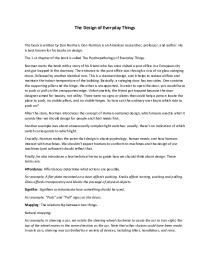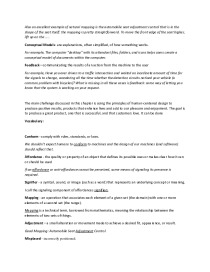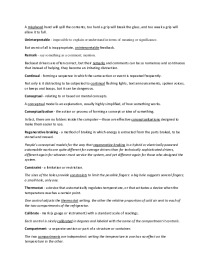The Design Of Everyday Things Book Summary



The Design of Everyday Things Book Summary and Vocabulary.
Norman starts the book with a story of his friend who has once visited a post office in a European city and got trapped in the doorway. The entrance to the post office was through a row of six glass swinging doors, followed by another identical row. This is a standard design, and it helps to reduce airflow and maintain the indoor temperature of the building. Basically, a swinging door has two sides. One contains the supporting pillar and the hinge, the other is unsupported. In order to open the door, you would have to push or pull on the unsupported edge. Unfortunately, the friend got trapped because the door designer aimed for beauty, not utility. There were no signs or plates that could help a person locate the place to push, no visible pillars, and no visible hinges. So how can the ordinary user know which side to push on?
Another example was about unnecessarily complex light switches: usually, there’s no indication of which switch corresponds to which light.
For example, A flat plate mounted on a door affords pushing. Knobs afford turning, pushing and pulling. Glass affords transparency and blocks the passage of physical objects.
For example, “Push” and “Pull” signs on the doors.
Also an excellent example of natural mapping is the automobile seat adjustment control that is in the shape of the seat itself: the mapping is pretty straightforward. To move the front edge of the seat higher, lift up on the .....
Feedback—communicating the results of an action from the machine to the user
- Literature Notes
- Microsoft Word 20 KB
- 2022 m.
- English
- 4 pages (1450 words)
- University
- Joris

















